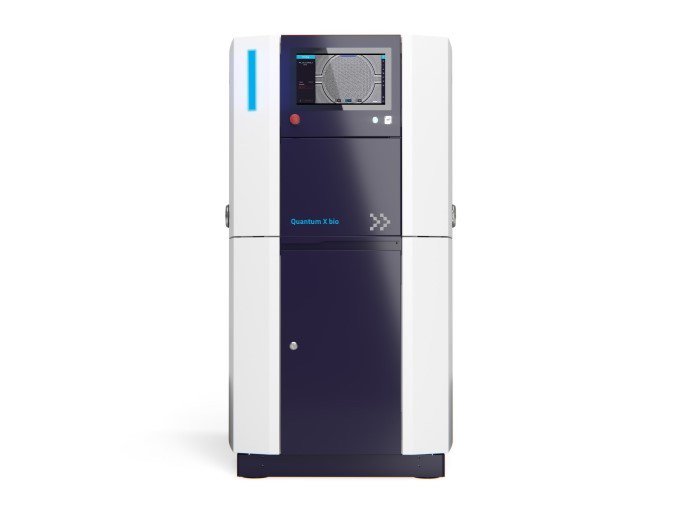
Aston University is set to install a Quantum X 3D bioprinter after the Biotechnology and Biological Sciences Research Council (BBSRC) awarded a grant of 612,176 GBP.
The Quantum X bioprinter is a joint product of BICO companies Nanoscribe and CELLINK, will allow researchers at Aston University to print cells in orientations similar to those found in organs in the body, such as the brain or liver. The structures and orientations of cells, like neurons in the brain, influence how they interact and connect, so being able to 3D print cells and tissues will enable researchers to develop a greater understanding of how the body works.
Nanoscribee and CELLINK have designed the Quantum X bioprinter to make use of 2-photon polymerisation (2PP) to print structures with extreme precision. The 2PP process focuses a laser on a photosensitive liquid that polymerises into a solid where the laser beam hits it, with the Quantum X able to print structures contaiming features down to sizes of 200 nm.
At Aston University, Professor Rhein Parri will lead a team to create 3D printed structures to support the growth of networks of human brain cells call astrocytes. In standard 2D cultures, astrocytes form haphazard networks, but with the bioprinter, the researchers will be able to create more ordered networks like those found in the brain. The team will be able to study astrocytes’ functions in brain functions like sleep and synaptic plasticity, a mechanism thought to be important for memory and learning.
“This new bioprinter will transform our ability at Aston University and the wider West Midlands to conduct 3D printing and make new discoveries in basic biological and tissue engineering research,” commented Professor Parri.
In addition to Professor Parri, Professor Roslyn Bill will study the blood-brain barrier, which when disrupted can see pathogens, neurotoxins and other substances enter the brain to cause immune and inflammatory responses. Professor Bill’s team will thus print a blood-brain barrier model to allow its critical functions to be better studied.
Meanwhile, Dr Emma Shepherd will print soft 3D models of a type of liver cell called sinusoidal endothelial cells (LSEC), which form a barrier between the liver and blood cells, containing pores which allows the passage of substances like oxygen and metabolites, known as fenestration. Dr Craig Russell will develop a model for drug delivery to the eye, while Dr John Simms will study a type of protein cell surfaces called G protein-coupled receptors (GPCRs) which detect molecules outside cells in the body and activate cellular responses within the cells.
The Quantum X bio is the first bioprinter of its kind to be installed by Nanoscribe in the UK, and will be made available to the wider research community of the Midlands Innovation Universities of Birmingham, Loughborough, Nottingham, Leicester and Warwick. Aston University is preparing a room with a controlled environment to house the printer, and associated cell culture facilities, with the machine expected to be in use from April 2024.
Cecilia Edebo, CEO, CELLINK, commented: “At the heart of our mission is the commitment to empower researchers with state-of-the-art bioprinting technologies, fostering new scientific breakthroughs. The acquisition of the Quantum X bio by Aston University marks a significant step towards advancing research in tissue engineering and drug discovery within the UK research landscape.
“Together with Nanoscribe, members of the BICO group, we are thrilled to continue our support to the research community and are excited to witness the incredible outcomes that will undoubtedly emerge from the use of this groundbreaking technology.”




